Since having to work from home, have you been feeling more tired? Are you dealing with increased neck and back pain, insomnia, or even poor circulation? Whether or not these ailments are caused by sitting at the desk all day, your worst response would be to rest and lie in bed. Physical activity, stretching and muscle strengthening are the best ways to keep your body aches at bay. Besides, isometric exercises that require you to maintain a specific posture for about 60 seconds, can be highly beneficial to physical health after a long and stressful day at the office.
According to Assistant Professor John Komar from the Physical Education and Sports Science (PESS) Academic Group, full-body yoga stretching is the perfect antidote to tiredness. You can even stretch behind your desk, with or without a yoga mat. If you are seated in front of your screen, making an effort to tuck-in your abdominal muscles can help to improve your posture. Additionally, stretching the muscles at the back of the thighs can drastically reduce the tension in your back.
Other than the obvious advantages to core strength, joint flexibility and posture, yoga can help to reduce stress, improve concentration and detoxify the body. However, as with all physical exercise, commitment and repetitions are key. A short session twice a week is enough to deliver visible outcomes after a few weeks, with results guaranteed by PESS!
Let’s get started with the following basic, full-body yoga stretches, presented by our PESS student teacher Ms Kimberly Edessa Hay:
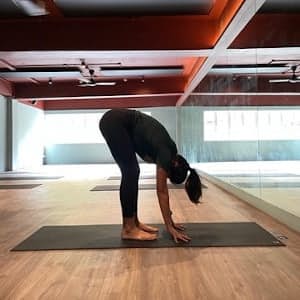
- Stand with your feet together, and reach down to touch the ground.
- If you can, wrap your hands behind your ankles, or bend your arms to hold each elbow using the opposite hand.
- Lift and lengthen your body as you inhale, and allow your body to fold deeper forward as you exhale.
- Hold the pose for 30-60 seconds before slowly getting up.
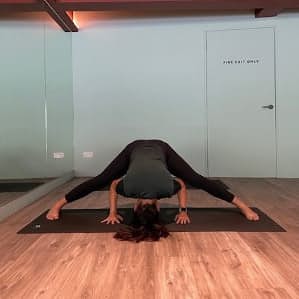
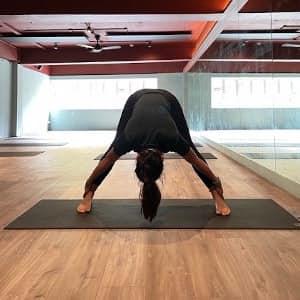
- Spread your legs wide apart, as shown.
- As you exhale, lean forward from your hips and place your hands on the ground directly below your shoulders.
- Straighten your legs as you inhale, and go for a deeper stretch by folding your body further forward.
- If you can, grip your ankles or lower the crown of your head to the floor.
- Hold the pose for 30-60 seconds before slowly supporting yourself back into a standing position.
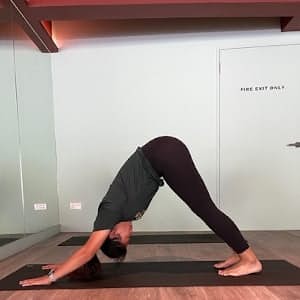
- Get on all fours, with your hands and knees on the ground.
- As you exhale, bring your palms forward and lift your knees off the floor, bringing your body into an inverted V-shape.
- As you inhale, push up your tailbone and bring your chest closer to your thighs.
- Lengthen your spine and push your thighs back so that both heels are on the ground (beginners can bend their knees slightly to keep both feet flat on the ground).
- Using your hands for support, open up your shoulders blades.
- Hold the position for 30-60 seconds.
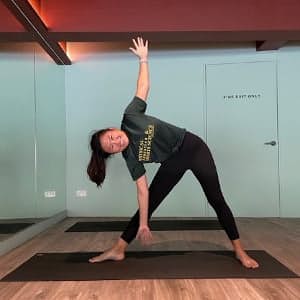
- Take a large step back with your right foot and place your hands on your hips.
- Turn the right foot out towards the side and align both heels to form a straight line.
- As you exhale, square your body and hips then rest your right arm on your right thigh.
- Next, reach your right hand to the ground and raise your left arm towards the ceiling.
- Check your alignment; imagine pressing your back against a wall.
- Hold the pose for 30 to 60 seconds before changing sides.

- Sit on the ground and straighten both legs.
- Bend your right knee and place the right foot against your left inner thigh, pressing your right knee to the ground.
- With your right hand on the right thigh and your left hand beside your hip, take a deep breath and twist your body towards the left, lining your belly button with your left thigh.
- Holding this position, lengthen your spine and press your weight onto the ground.
- If you can, reach out with your right hand to grab the inner left foot or big toe.
- Alternatively, lean forward into a comfortable stretch, bringing your belly and head close to your left leg.
- Hold the pose for 30-60 seconds before switching sides.




